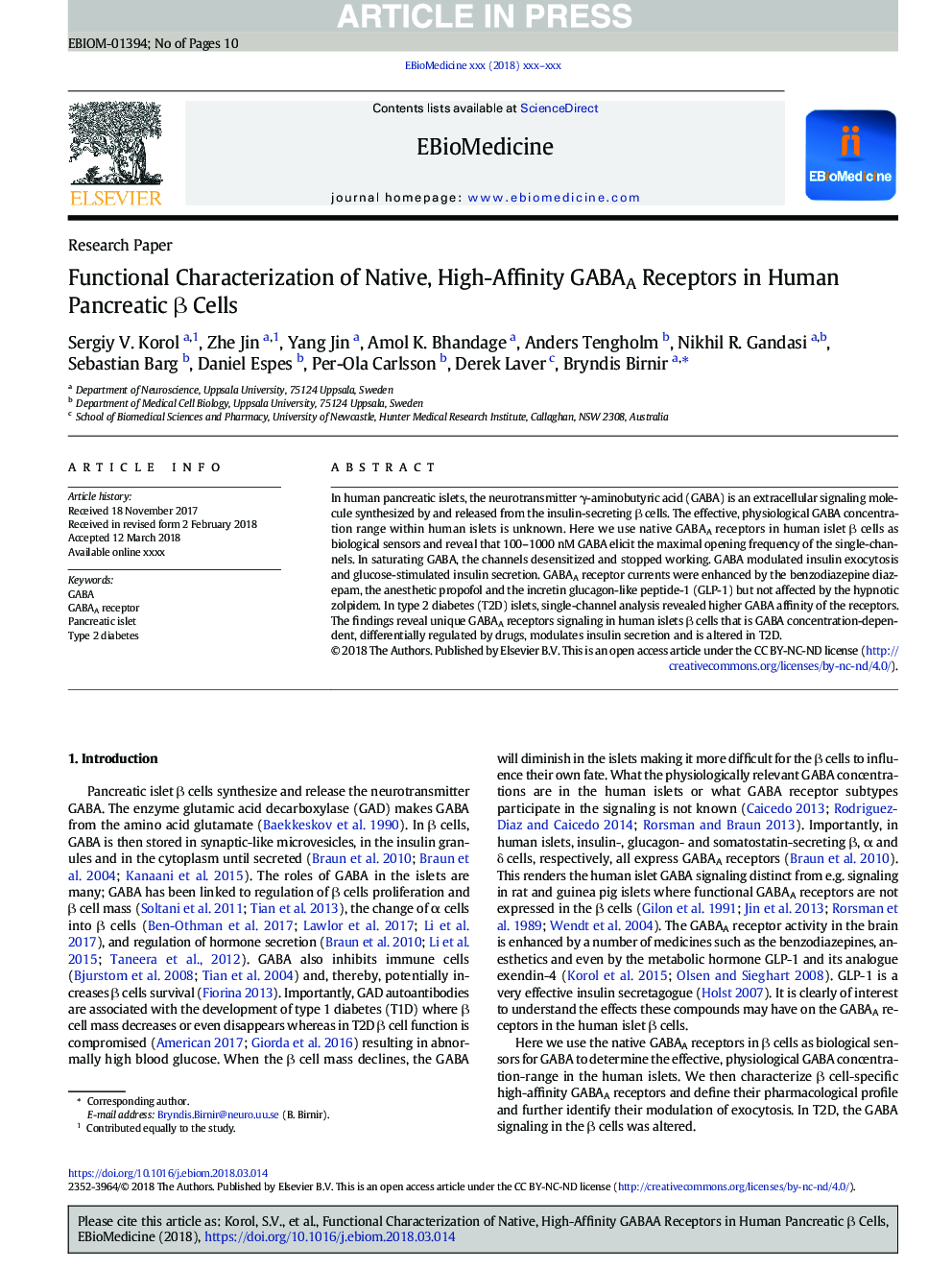| Article ID | Journal | Published Year | Pages | File Type |
|---|---|---|---|---|
| 8437407 | EBioMedicine | 2018 | 10 Pages |
Abstract
In human pancreatic islets, the neurotransmitter γ-aminobutyric acid (GABA) is an extracellular signaling molecule synthesized by and released from the insulin-secreting β cells. The effective, physiological GABA concentration range within human islets is unknown. Here we use native GABAA receptors in human islet β cells as biological sensors and reveal that 100-1000 nM GABA elicit the maximal opening frequency of the single-channels. In saturating GABA, the channels desensitized and stopped working. GABA modulated insulin exocytosis and glucose-stimulated insulin secretion. GABAA receptor currents were enhanced by the benzodiazepine diazepam, the anesthetic propofol and the incretin glucagon-like peptide-1 (GLP-1) but not affected by the hypnotic zolpidem. In type 2 diabetes (T2D) islets, single-channel analysis revealed higher GABA affinity of the receptors. The findings reveal unique GABAA receptors signaling in human islets β cells that is GABA concentration-dependent, differentially regulated by drugs, modulates insulin secretion and is altered in T2D.
Related Topics
Life Sciences
Biochemistry, Genetics and Molecular Biology
Cancer Research
Authors
Sergiy V. Korol, Zhe Jin, Yang Jin, Amol K. Bhandage, Anders Tengholm, Nikhil R. Gandasi, Sebastian Barg, Daniel Espes, Per-Ola Carlsson, Derek Laver, Bryndis Birnir,
